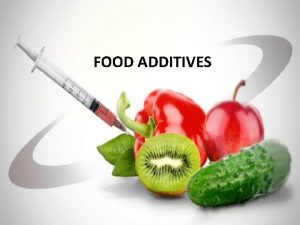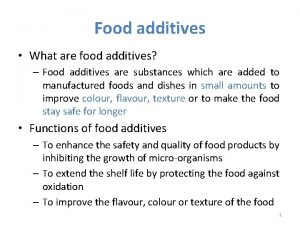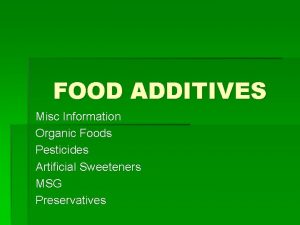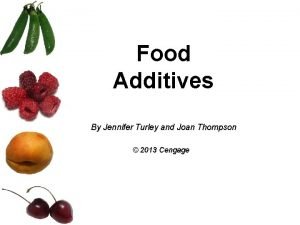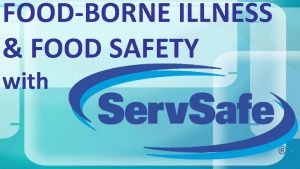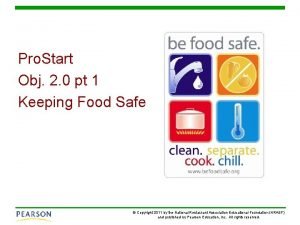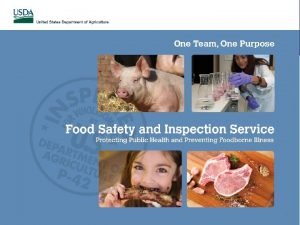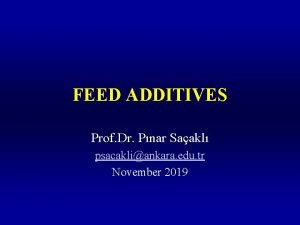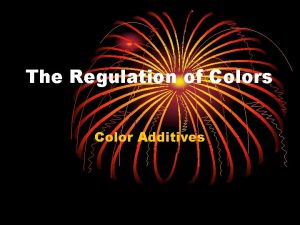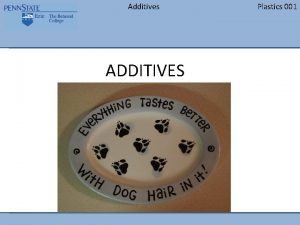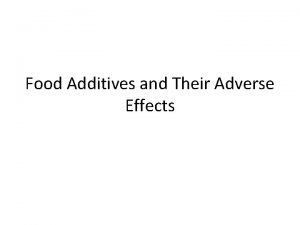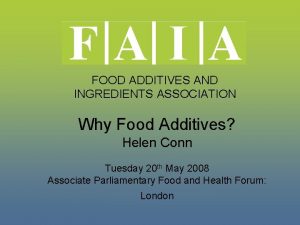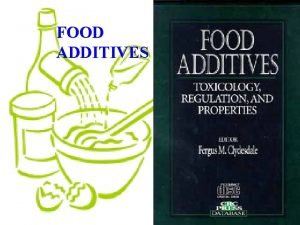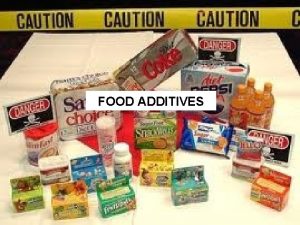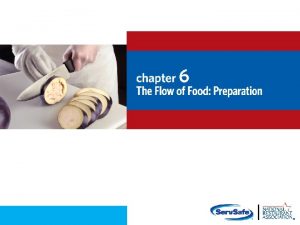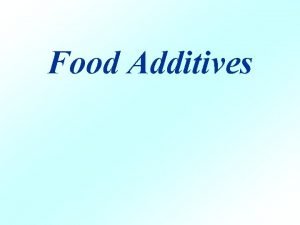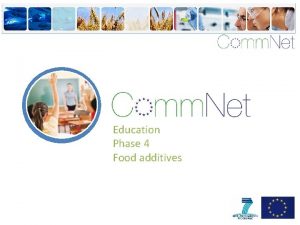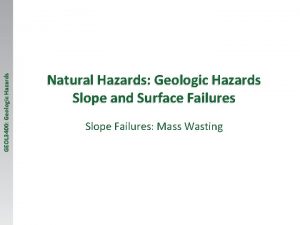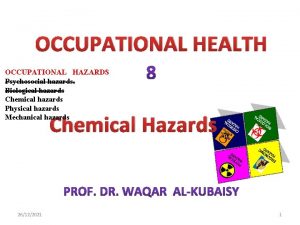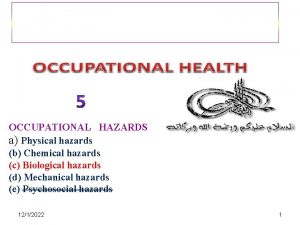ADDITIVES AND HAZARDS IN FOOD FOOD ADDITIVES DEFINITION















- Slides: 15

ADDITIVES AND HAZARDS IN FOOD

FOOD ADDITIVES DEFINITION FOOD ADDITIVES means substances that normally are not used independently as food or its ingredient and which, after being added to the food during its production, processing packaging, transportation or storage, remain included in the food, even in changed state.

PROPERTIES OF FOOD ADDITIVES n n n Preserve the natural qualities and the nutritional value of food Decrease the level of or substitute for some food ingredients in order to produce dieted or specialized food Improve the food organoleptic properties without changing its nutritional value and qualities Improve the qualities and stability of the food during its storage Improve the production process of preparing, processing, disbanding the products

FOOD ADDITIVES Only food additives approved by the European council directives are allowed for use. http: //europa. eu. int

FOOD ADDITIVES n n n n Preservatives and antibiotics Colorings Sweeteners Antioxidants Acidity regulators Antifoaming agents

FOOD ADDITIVES n n n n Fillers Emulsifiers Hardeners Foaming agents Gelatins Glazing agents Moisture-retaining agents

FOOD ADDITIVES n n n Modified starch Packing gases Stabilizers Thickeners Bread stuffs agents Enzymes, etc.

FOOD HAZARDS This group of chemical substances, also known as exogenous toxicants, comprises substances which are not deliberately added to the food.

SANITARY EVALUATION OF FOOD HAZARDS The sanitary evaluation of food hazards is based on: n Acceptable daily intake (ADI) – an estimate of the amount of a food additive expressed on a body weight basis, that can be ingested daily over of lifetime without appreciable health risk n maximum level (ML), presented in mg substance per kg food.

INORGANIC FOOD HAZARDS - GROUPS n n n Pesticides Heavy metals Plastics, contacting food Nitrates and nitrites Others – antibiotics, vet chemicals, radiation contamination

PESTICIDES n n Chloroorganic pesticides – characterized with stability in nature, good cumulation, low toxic effects Phosphororganic pesticides – high levels of acute toxicity, unstable in nature, low cumulation Carbamates and dithyocarbamates – unstable in nature, low cumulation Mercury-organic chemicals – very toxic, high cumulation, stable in nature

HEAVY METALS n n Lead – used for glazing pottery Mercury – cumulates in fish and sea food; also can be found in food, fertilized with mercury-organic pesticides Cadmium – used as a part of some fertilizers and so is found in plants; some sea creatures accumulate it in great amount Copper and zinc – these can cause acute poisoning; they get in the organism if the food has been stored in containers, made of copper and zinc

PLASTICS USED TO CONTACT FOOD Plastics used to contact food, may cause negative effects on human health due to their chemical structure. Residues of monomers or additives, used in order to improve the plastics qualities (stabilizers, plastifiers, colorings, antioxidants), are the reason for such effects. In order to guarantee the safety of materials and goods (packages, containers, machine elements, etc), regulations for the EU have been worked out. http: //europa. eu. int

NITARTES AND NITRITES They are present in food as a result of growing plants with nitrogen-containing fertilizers.

OTHER HAZARDS IN FOOD Antibiotics – used in agriculture as medicines or growth stimulants for the animals. They can cause allergic reactions, dysbacteriosis, etc. in human organism n Vet medicines n Radiation contamination http: //www. nea. fr/html/rp/chernobyl/ welcome. html n
 Food additives definition
Food additives definition Natural and artificial food additives
Natural and artificial food additives Advantages and disadvantages of food additives
Advantages and disadvantages of food additives Food additives examples
Food additives examples Msg pesticide
Msg pesticide Examples of intentional food additives
Examples of intentional food additives Plasticizer example
Plasticizer example Pests can cause which two types of contamination?
Pests can cause which two types of contamination? Potential food hazards
Potential food hazards A cook uses a cleaning towel to wipe up spills
A cook uses a cleaning towel to wipe up spills Give me one example of
Give me one example of Gargles are monophasic liquids
Gargles are monophasic liquids Food safety and inspection service definition
Food safety and inspection service definition Saakl
Saakl High performance additives
High performance additives Color additives amendment
Color additives amendment
